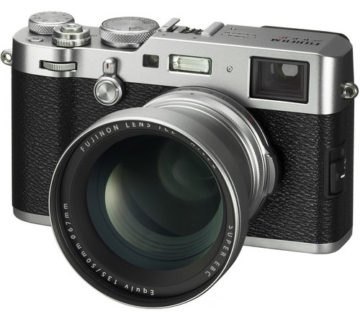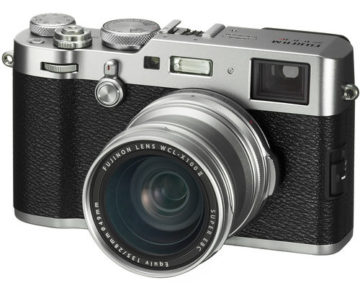Today Fujifilm announced the X100F, the latest evolution of its popular X-series of cameras which now consists of four iterations.
The biggest change to this new model compared to its predecessor, the X100T, is the brand new 24MP X-Trans III sensor found on the X-T2 and X-Pro2 flagship cameras. Like the previous generation, it has a unique random colour filter array to reduce moiré and false colours without the need for an optical low-pass filter. The X-Processor Pro image processor, also inherited from the flagship models, is four times faster than the previous processor.
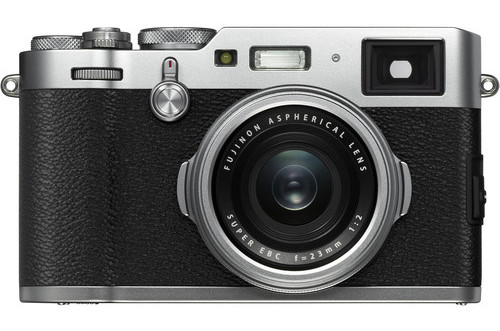
The native ISO range of the X100F is 200 to 12800, though extended values (pull 100, push 25600 and 51200) are available in both RAW and JPG format. The Noise Reduction range has been expanded (±4) and highlights/shadows can be adjusted from -2 to +4. The RAW format is 14-bit and you have the option to choose between uncompressed (50MB average) or lossless compressed (30MB average).
ACROS, the latest Film Simulation mode, is also available, along with all the other film simulation modes seen on previous X-series cameras. There are also 13 creative filters, as well as a Film Grain Effect mode with two levels (weak and strong).
Although the sensor and processor have been updated, the fixed 23mm f/2 lens is identical to the previous X100 series models. Other characteristics that remain unchanged are the hybrid viewfinder (Reverse Galilean OVF and 0.48-inch 2360K-dot EVF) and the static 3-inch 1040K-dot LCD screen on the rear. To appease those hoping for a tilting touchscreen, the X100F has been given the same AF toggle (focus lever) found on the X-Pro2 and X-T2 to help you quickly change the AF point on the fly.

Physically speaking, the X100F greatly resembles the other X100 series cameras, give or take a handful of small tweaks to the design. For example, it has inherited the dual shutter speed-ISO dial of the X-Pro2 and now has front command dial to change the exposure. Additionally, most of the buttons have been rearranged so that they are accessible even when using the camera with one hand.
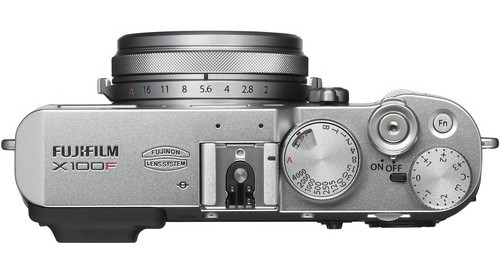
The X100F comes with the same updated autofocus system as the X-T2. It boasts 325 AF points, of which the 91 central points are phase detection. You can select the single focus point within two AF groups: 77 points (7×11) or 273 points (13×21). Zone AF can be used with three different groups (3×3 / 5×3 / 7×7) within the 77 central phase detection points, and Wide/Tracking is also available.
Also new is the redesigned menu system, which is now easier to navigate in comparison to its predecessor. There are now different icons that clearly correspond to the various settings. For instance, all the settings related to image quality are found in the I.Q. menu. You can also save all your favourite settings in a new section called “My Menu”. There are also three Power Management settings: “High Performance“, “Standard” and “Economy“.
Other specifications include a mechanical shutter speed of 1/4000s or 1/32000s with the silent electronic shutter and a maximum flash sync speed of 1/2000s.
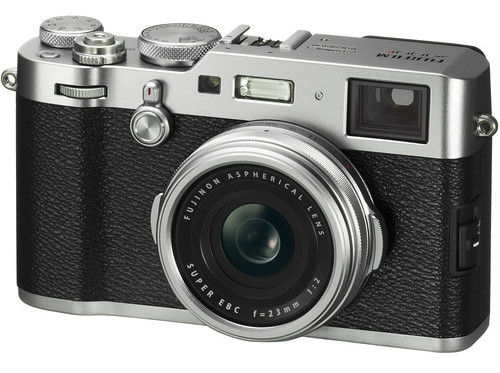
Although the flagship X-T2 has excellent 4K video capabilities, the X100F has been limited to Full HD and HD ready (720p) up to 60fps like the X-Pro2. It can record continuously for a maximum of 14 minutes.
Common to all X-series cameras today are Wi-Fi capabilities that can be accessed via Fujifilm’s Camera Remote app.
Joining the X100F are the updated “mark II” versions of the popular WLC-X100 wide angle and TLC-X100 tele conversion lenses. They offer electronic contacts so that the X100F will automatically recognises the conversion lens and correct aberrations.
The Fujifilm X100F will be available in February 2017 at the retail price of $1299. It will come in black and silver.

